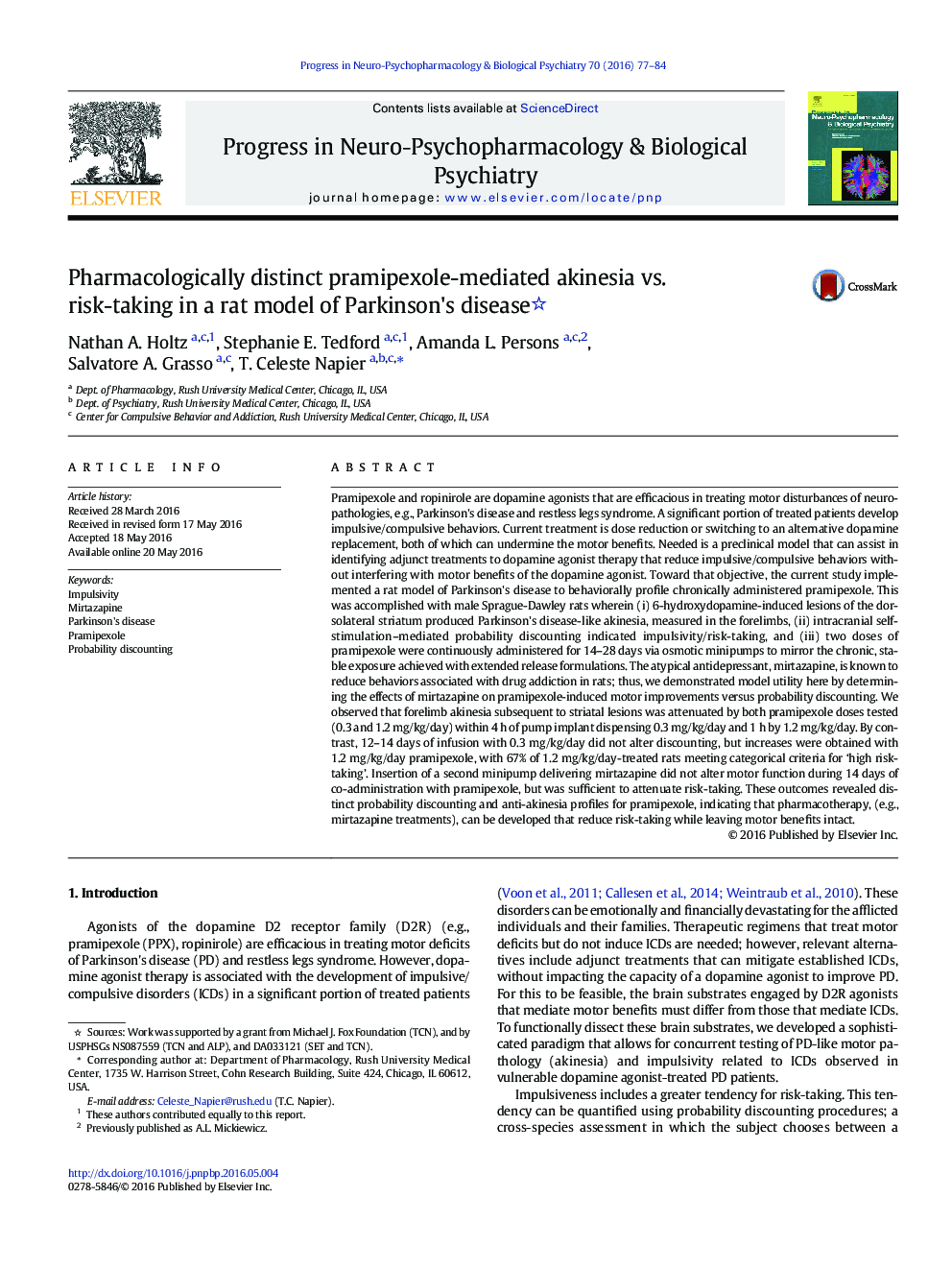| Article ID | Journal | Published Year | Pages | File Type |
|---|---|---|---|---|
| 2564661 | Progress in Neuro-Psychopharmacology and Biological Psychiatry | 2016 | 8 Pages |
•A novel model of impulsivity associated with Parkinson's disease is described.•Dose-related effects of continuously released pramipexole in this model are revealed.•Pramipexole effects on motor dysfunction were distinct from effects on impulsivity.•Mirtazapine altered impulsivity, but not motor benefits, of pramipexole.•The model may help identify adjunct therapy to reduce unwanted side effects of pramipexole.
Pramipexole and ropinirole are dopamine agonists that are efficacious in treating motor disturbances of neuropathologies, e.g., Parkinson's disease and restless legs syndrome. A significant portion of treated patients develop impulsive/compulsive behaviors. Current treatment is dose reduction or switching to an alternative dopamine replacement, both of which can undermine the motor benefits. Needed is a preclinical model that can assist in identifying adjunct treatments to dopamine agonist therapy that reduce impulsive/compulsive behaviors without interfering with motor benefits of the dopamine agonist. Toward that objective, the current study implemented a rat model of Parkinson's disease to behaviorally profile chronically administered pramipexole. This was accomplished with male Sprague-Dawley rats wherein (i) 6-hydroxydopamine-induced lesions of the dorsolateral striatum produced Parkinson's disease-like akinesia, measured in the forelimbs, (ii) intracranial self-stimulation–mediated probability discounting indicated impulsivity/risk-taking, and (iii) two doses of pramipexole were continuously administered for 14–28 days via osmotic minipumps to mirror the chronic, stable exposure achieved with extended release formulations. The atypical antidepressant, mirtazapine, is known to reduce behaviors associated with drug addiction in rats; thus, we demonstrated model utility here by determining the effects of mirtazapine on pramipexole-induced motor improvements versus probability discounting. We observed that forelimb akinesia subsequent to striatal lesions was attenuated by both pramipexole doses tested (0.3 and 1.2 mg/kg/day) within 4 h of pump implant dispensing 0.3 mg/kg/day and 1 h by 1.2 mg/kg/day. By contrast, 12–14 days of infusion with 0.3 mg/kg/day did not alter discounting, but increases were obtained with 1.2 mg/kg/day pramipexole, with 67% of 1.2 mg/kg/day-treated rats meeting categorical criteria for ‘high risk-taking’. Insertion of a second minipump delivering mirtazapine did not alter motor function during 14 days of co-administration with pramipexole, but was sufficient to attenuate risk-taking. These outcomes revealed distinct probability discounting and anti-akinesia profiles for pramipexole, indicating that pharmacotherapy, (e.g., mirtazapine treatments), can be developed that reduce risk-taking while leaving motor benefits intact.
